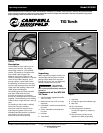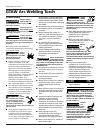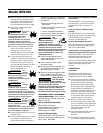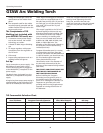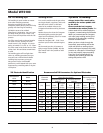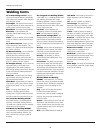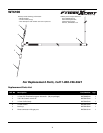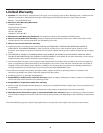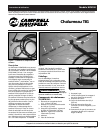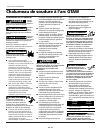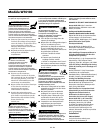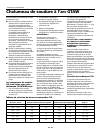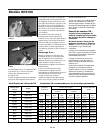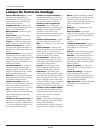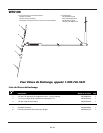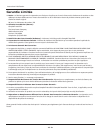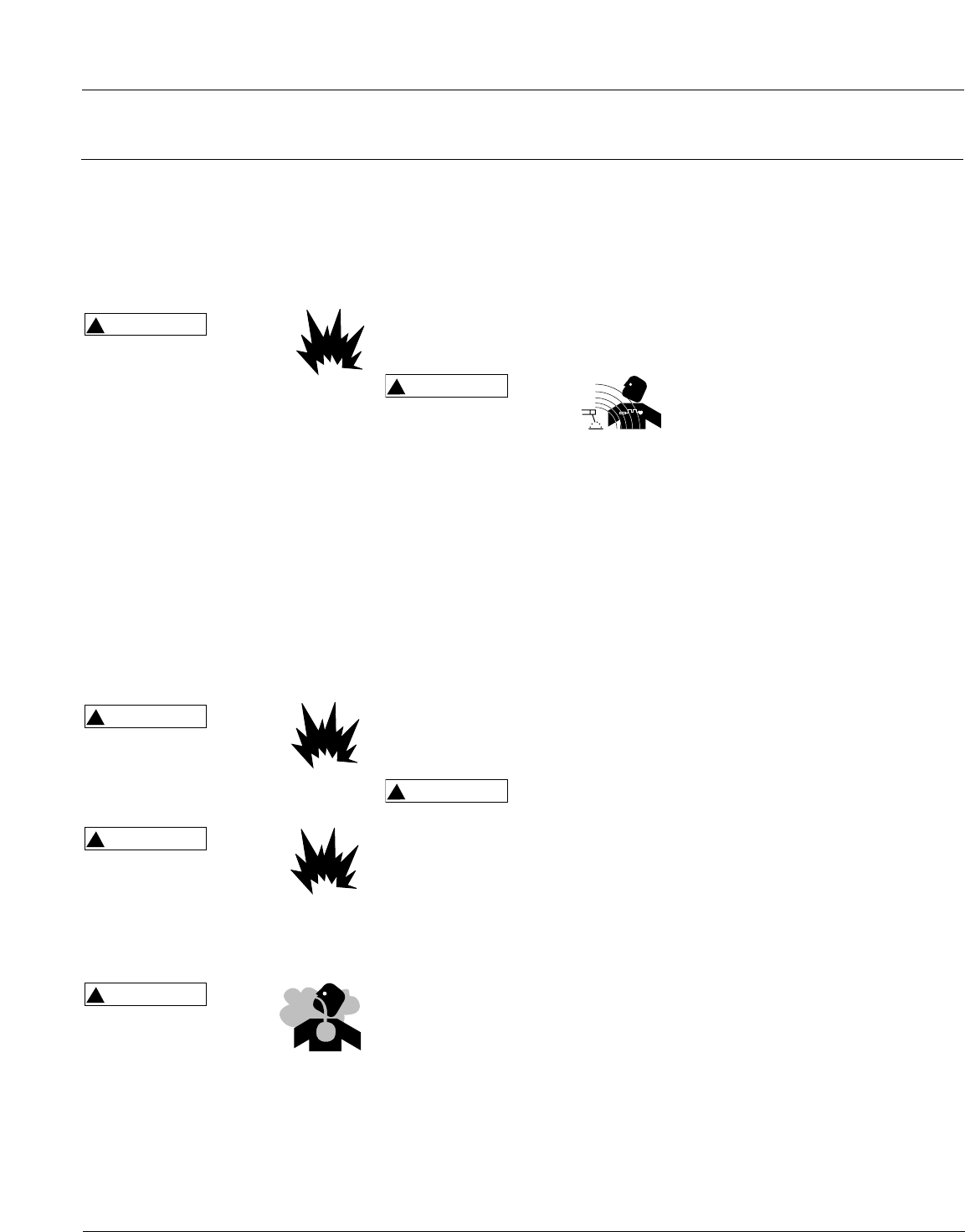
Safe Handling of Compressed Gases
in Cylinders
CGA Pamphlet P-1, from Compressed
Gas Association, 1235 Jefferson Davis
Highway, Suite 501, Arlington, VA
22202
Code for Safety in Welding and
Cutting
CSA Standard W117.2, from Canadian
Standards Association, Standards Sales,
178 Rexdale Boulevard, Rexdale,
Ontario, Canada M9W 1R3
Cutting And Welding Processes
NFPA Standard 51B, from National Fire
Protection Association, Batterymarch
Park, Quincy, MA 02269
Safe Practices For Occupational And
Educational Eye And Face Protection
ANSI Standard Z87.1, from American
National Standards Institute, 1430
Broadway, New York, NY 10018
Refer to the Material Safety Data Sheets
and the manufacturers instructions for
metals, electrodes, coatings and
cleaners.
Installation
LOCATION
Selecting the proper location can
significantly increase performance,
reliability and life of the arc welder.
● For best results locate the welder in
an environment that is clean and dry.
Avoid locations exposed to high
temperature, high humidity, dust
and corrosive fumes. High humidity
causes moisture condensation on
electrical components. Moisture can
contribute to corrosion and short
electrical components. Dust and dirt
in the welder retain moisture and
increase wear of moving parts.
● Place the welder in an area that
provides at least twelve inches (305
mm.) of ventilation space at both the
front and rear of the unit. Keep all
obstructions away from this
ventilation space.
● Store electrodes and filler metal in a
clean, dry location with low
humidity.
● The welder control panel contains
information regarding proper input
● Make sure that all persons in the
welding area are protected from
heat, sparks, and ultraviolet rays.
Use additional face shields and
flame resistant barriers as needed.
● Never touch work pieces until
completely cooled.
Heat and
sparks
produced during electric arc
welding and other metal
working operations can
ignite flammable and explosive
materials! Take all precautions
described in this manual to reduce the
possibility of flames and explosions.
● Remove all flammable materials
within 35 feet (10.7 meters) of
welding arc. If removal is not
possible, tightly cover flammable
materials with fire proof covers.
● Do not operate any electric arc
welder in areas where flammable or
explosive vapors may be present.
Take precautions to be sure that
flying sparks and heat do not cause
flames in hidden areas, cracks,
behind bulkheads, etc.
Fire
hazard!
Do not weld on containers or
pipes that contain or have
contained flammable
materials or gaseous or liquid
combustibles.
Arc
welding
closed cylinders or
containers such as tanks or
drums can cause explosion if
not properly vented! Verify that any
cylinder or container to be welded has
an adequate ventilation hole, so that
expanding gases can be released.
Do not
breathe
fumes that are produced by
the arc welding operation.
These fumes are
dangerous. If the welding area cannot
be adequately ventilated, be sure to
use an air-supplied respirator.
● Keep the head and face out of the
welding fumes.
● Do not perform electric arc welding
operations on metals that are
galvanized or cadmium plated, or
!
WARNING
!
WARNING
!
WARNING
!
WARNING
Model WT6100
contain zinc, mercury, or beryllium
without completing the following
precautions:
a. Remove the coating from the
base metal.
b. Make sure that the welding area
is well ventilated.
c. Use an air-supplied respirator.
Extremely toxic fumes are created
when these metals are heated.
The
electro-
magnetic field that is
generated during arc
welding may interfere with the
operation of various electrical and
electronic devices such as cardiac
pacemakers. Persons using such devices
should consult with their physician
prior to performing any electric arc
welding operations.
● Route the electrode and work
cables together and secure with
tape when possible.
● Never wrap arc welder cables
around the body.
● Always position the electrode and
ground leads so that they are on
the same side of the body.
● Exposure to electromagnetic fields
during welding may have other
health effects which are not known.
Always be sure
that the welding
area is secure and free of hazards
(sparks, flames, glowing metal or slag)
prior to leaving. Be sure that
equipment is turned off and electrode
is removed. Be sure that cables are
loosely coiled and out of the way. Be
sure that all metal and slag has cooled.
ADDITIONAL SAFETY STANDARDS
ANSI Standard Z49.1 from American
Welding Society, 550 N.W. LeJune Rd.
Miami, FL 33126
Safety and Health Standards
OSHA 29 CFR 1910, from
Superintendent of Documents, U.S.
Government Printing Office,
Washington, D.C. 20402
National Electrical Code
NFPA Standard 70, from National Fire
Protection Association, Batterymarch
Park, Quincy, MA 02269
!
WARNING
!
WARNING
www.chpower.com
3



